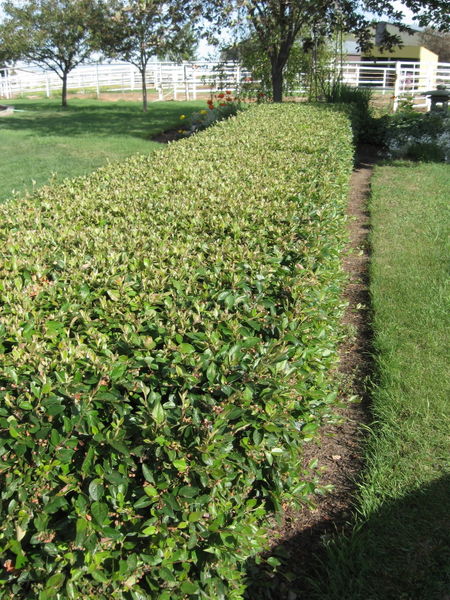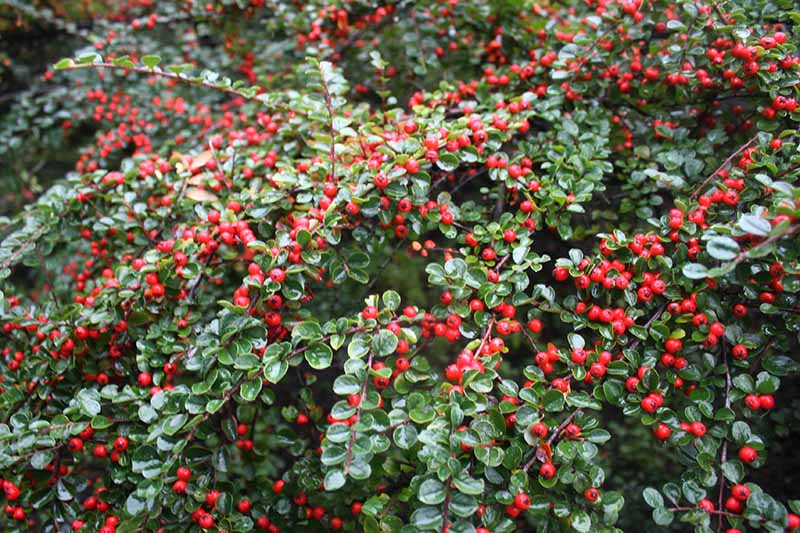Peking Cotoneaster: The Perfect Shrub For Your Landscape
Peking Cotoneaster: The Perfect Shrub for Your Landscape
Peking cotoneaster is a versatile shrub that can be used in a variety of landscape settings. It is hardy, low-maintenance, and attractive, making it a popular choice for homeowners and landscapers alike.
In this blog post, we will take a closer look at Peking cotoneaster, discussing its features, benefits, and uses. We will also provide some tips on how to care for this hardy shrub.
Features of Peking Cotoneaster
Peking cotoneaster is a deciduous shrub that grows 3-6 feet tall and wide. It has dark green foliage that turns a brilliant scarlet color in the fall. The flowers are small and white, and they bloom in the spring. The fruits are small, black berries that are edible but not particularly flavorful.
Peking cotoneaster is a hardy shrub that can tolerate a wide range of conditions. It is drought-tolerant and can withstand full sun or partial shade. It is also relatively pest- and disease-resistant.
Benefits of Peking Cotoneaster
There are many benefits to planting Peking cotoneaster in your landscape. Here are a few of the most notable:
- Hardiness: Peking cotoneaster is a hardy shrub that can withstand a wide range of conditions. It is drought-tolerant and can withstand full sun or partial shade.
- Low-maintenance: Peking cotoneaster is a low-maintenance shrub that requires little care. It only needs to be watered occasionally, and it does not need to be pruned very often.
- Attractive: Peking cotoneaster is an attractive shrub with dark green foliage that turns a brilliant scarlet color in the fall. It also produces small, black berries that are edible but not particularly flavorful.
- Versatile: Peking cotoneaster can be used in a variety of landscape settings. It can be used as a hedge, a specimen plant, or a border plant. It can also be used to add interest to rock gardens or to attract birds and butterflies to your yard.
Uses of Peking Cotoneaster
Peking cotoneaster is a versatile shrub that can be used in a variety of landscape settings. Here are a few of the most common uses:
- Hedge: Peking cotoneaster can be used to create a dense, attractive hedge. It is a good choice for privacy screens or to define the edges of your property.
- Specimen plant: Peking cotoneaster can also be used as a specimen plant. It is a good choice for adding interest to a sunny spot in your yard.
- Border plant: Peking cotoneaster can also be used as a border plant. It is a good choice for adding color and interest to your flower beds.
- Rock garden: Peking cotoneaster can also be used in rock gardens. It is a good choice for adding color and interest to these dry, sunny areas.
- Attracting birds and butterflies: Peking cotoneaster is a good choice for attracting birds and butterflies to your yard. The berries are a source of food for birds, and the flowers attract butterflies.
How to Care for Peking Cotoneaster
Peking cotoneaster is a low-maintenance shrub that requires little care. However, there are a few things you can do to keep it healthy and thriving:
- Watering: Peking cotoneaster is drought-tolerant, but it will need to be watered occasionally, especially during hot, dry weather.
- Fertilizing: Peking cotoneaster does not need to be fertilized very often. A light application of fertilizer in the spring will help it to bloom and produce berries.
- Pruning: Peking cotoneaster does not need to be pruned very often. However, you may want to trim it back in the spring to keep it in shape.
Conclusion
Peking cotoneaster is a versatile and attractive shrub that can be used in a variety of landscape settings. It is hardy, low-maintenance, and attractive, making it a popular choice for homeowners and landscapers alike.
If you are looking for a shrub that can add beauty and interest to your landscape, Peking cotoneaster is a great option. With its dark green foliage, scarlet fall color, and edible berries, this shrub is sure to please.
If you're looking for a beautiful, hardy, and low-maintenance shrub for your yard, the Peking cotoneaster is a great option. This deciduous shrub is known for its glossy, dark green leaves that turn shades of red, orange, and yellow in the fall. It also produces small, black berries that are a favorite of songbirds.
The Peking cotoneaster is easy to care for and can tolerate a wide range of conditions. It prefers full sun but can also tolerate partial shade. It is also drought-tolerant and relatively pest- and disease-resistant.
If you're interested in learning more about the Peking cotoneaster, I recommend visiting Garden Wiki. This website has a wealth of information about the plant, including its care, planting, and propagation. You can also find photos and videos of the plant in its different stages of growth.
FAQ of peking cotoneaster
- What is Peking cotoneaster?
Peking cotoneaster is a deciduous shrub that is native to China. It is known for its attractive red berries, which appear in the fall. Peking cotoneaster can grow up to 6 feet tall and wide. It is a hardy plant that can tolerate a wide range of conditions, including full sun, partial shade, and poor soil.
- How do I plant Peking cotoneaster?
The best time to plant Peking cotoneaster is in the spring or fall. Choose a site in full sun or partial shade with well-drained soil. Dig a hole that is twice as wide and deep as the root ball of the plant. Add some compost or manure to the soil and mix it well. Place the plant in the hole and backfill with soil, tamping it down firmly. Water the plant well.
- What does Peking cotoneaster need to thrive?
Peking cotoneaster is a relatively easy plant to care for. It needs full sun or partial shade and well-drained soil. Water the plant regularly, especially during hot, dry weather. Fertilize the plant in the spring with a balanced fertilizer. Prune the plant in the spring or fall to remove dead or damaged branches.
- Is Peking cotoneaster invasive?
Peking cotoneaster is not considered to be an invasive plant. However, it can spread by seed and become a nuisance if not properly controlled. If you are concerned about Peking cotoneaster becoming invasive, you can plant it in a container or in a location where it cannot spread.
- How do I propagate Peking cotoneaster?
Peking cotoneaster can be propagated by seed, cuttings, or layering. Seed propagation is the most common method. Sow the seeds in the spring in a well-drained potting mix. Keep the soil moist and warm. The seeds will germinate in 2-4 weeks.
Image of peking cotoneaster
5 different images of Peking cotoneaster from Pinterest:
- Image 1: A small, evergreen shrub with glossy, dark green leaves that turn shades of red, orange, and yellow in the fall. The shrub has small, white flowers in the spring and clusters of red berries in the fall.

- Image 2: A close-up of the leaves of a Peking cotoneaster, showing their glossy texture and dark green color.

- Image 3: A full-grown Peking cotoneaster shrub, showing its height of about 5 feet and its spread of about 4 feet. The shrub is covered in small, white flowers in the spring.
- Image 4: A cluster of red berries on a Peking cotoneaster shrub. The berries are about the size of a pea and turn from green to red in the fall.

- Image 5: A Peking cotoneaster shrub planted in a garden. The shrub is surrounded by other plants, including a Japanese maple tree and a hydrangea bush.
Post a Comment for "Peking Cotoneaster: The Perfect Shrub For Your Landscape"